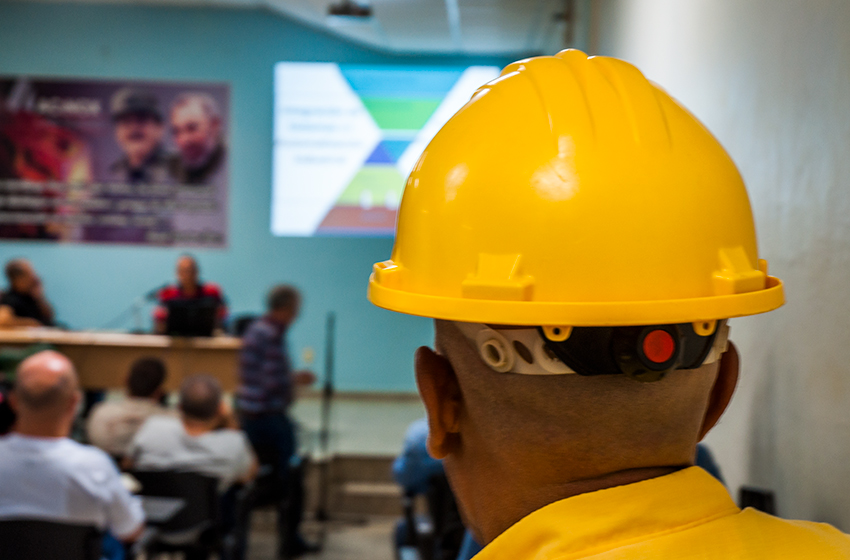
The applied research project between the Stainless Steel Company (ACINOX Las Tunas) and several universities has already entered its final stretch, thus corroborating the success of the initiative that has brought the productive and academic sectors of the nation together in terms of solving specific problems.
Las Tunas, Cuba.- The Doctor of Sciences Guillermo González Yero, coordinator of this project entitled Advanced Automation for the Elaboration and Refinement of Steel (AA-Elacero), explained that this year, the different postgraduate investigations that it comprise should be presented, grouped into three programs: Energy Efficiency, Industrial Engineering, and Automation.
“In the case of the Master's in Energy Efficiency, it is expected that the defense of its research will conclude in June, the Industrial Engineering will do so a month before; and that of Automatics will be from September, depending on the epidemiological situation since professors from the Universities of Oriente and Las Villas take part in it,” he specified.
All the researchers, González Yero assured, are in the middle of the final task of their studies and a good part of them are already with the planned results. The project has also had a high percentage of permanence compared to those who started three years ago, highlighted the also main specialist of Development and Innovation in ACINOX Las Tunas. "The intention is to strengthen our accompaniment in the coming weeks so that to make up for lost time for those who are lagging," he said.
Some of the main objects of study of the project within the steelworks have been the 220-kilovolt electrical substation, the electric arc furnace, the smoke plant, and the ladle furnace.
Launched in mid-2018, the AA-Elacero involves engineers and other professionals not only from ACINOX Las Tunas, but also from other companies in the territory such as Copextel, Integral Automation (CEDAI), RadioCuba, and the Generators and Electric Services (Geysel). All with the common purpose of proposing solutions that increase the energy efficiency in steelmaking. To achieve this, they have had the advice of five professors from the Center for Energy Studies and Technological Processes (Ceeprot) of the University of Las Tunas (ULT) and 15 from the Automation Department of the University of Oriente (UO), as well as others experts from the Central University of Las Villas.
The investment process that is being carried out at the moment in the Antillana Steel Company of Havana left ACINOX Las Tunas in charge of all the carbon steel production in Cuba. This is a manufacturing process that requires high consumption of energy and other associated elements such as electrodes and refractories. Only the Balcón de Oriente factory accounts for a third of all the electricity consumed by the Steel and Metal Business Group (GESIME) in one year, an amount that exceeds by more than 20 gigawatt-hours the electricity consumption of the rest of the territory in the same period.
Energy accounts for almost 40 percent of the entity's entire economic expenditure to produce carbon steel. If the solutions proposed by the AA-Elacero Project were successful, Acinox would reduce its energy consumption by, at least, 15 percent, which three years ago was estimated to mean annual savings of 1.8 million dollars. Now, in a scenario of monetary exchange unification, that figure may be higher.
"I believe in the value of science to provide our people with better results," Doctor of Science González Yero said regarding the recent exhortations made by Cuban President Miguel Díaz-Canel to reduce the distance between scientific research and the productive sector from the country.
From his point of view, there is already a positive change among entrepreneurs, "we see greater predisposition to use the contributions of science more significantly."
"ACINOX Las Tunas is a clear example of that," he said. "Managing an automatic project under the conditions of limited resources takes a lot of effort but, at the same time, stimulates us," he said.





